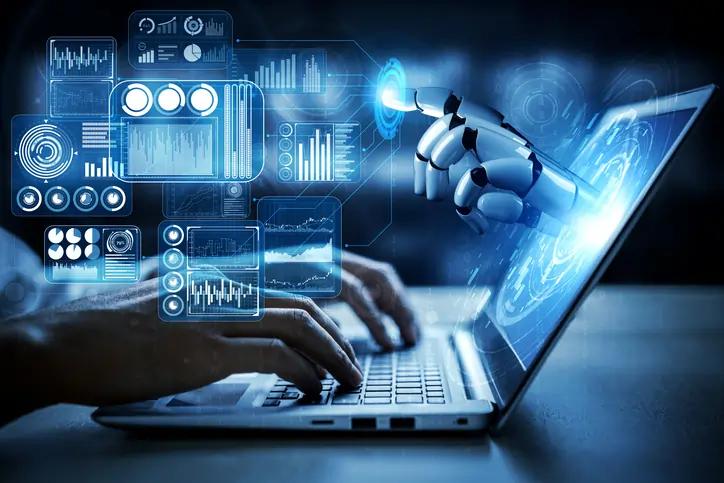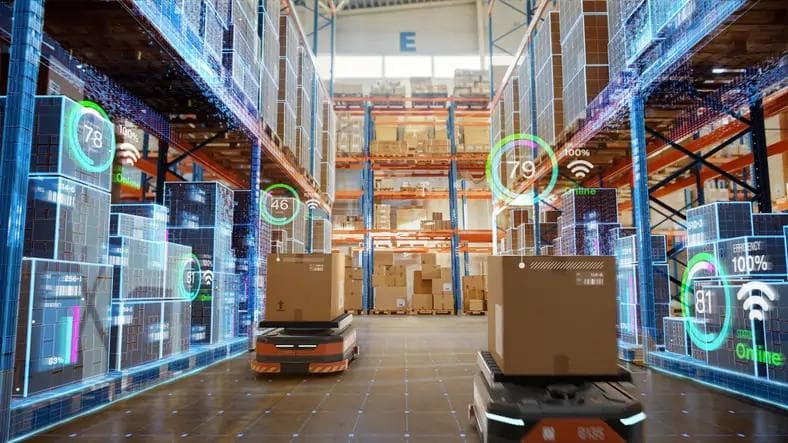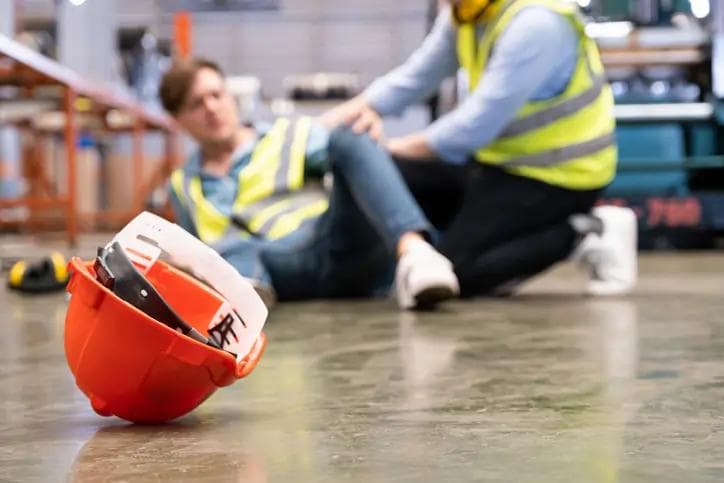The Double-Edged Sword: Understanding the Risks and Rewards of Workplace Automation
The Double-Edged Sword: Understanding the Risks and Rewards of Workplace Automation
Published by Jessica Weisman-Pitts
Posted on April 3, 2025

Published by Jessica Weisman-Pitts
Posted on April 3, 2025

Work is changing—fast. As automation and artificial intelligence (AI) continue to evolve, businesses are rethinking how tasks are completed, how employees engage, and where value is created. According to the World Economic Forum’s Future of Jobs Report 2023, employers expect that 42% of business tasks will be automated by 2027.
Automation itself isn’t new, but the speed and scale at which it's advancing are. From robotics and AI software to intelligent workflows, these technologies are becoming central to how industries operate. The rewards are real—but they come with trade-offs.
The Evolution of Workplace Automation
Automation has long contributed to industrial progress—from mechanized agriculture to factory assembly lines. But today’s wave, powered by AI and machine learning, is broader in scope and deeper in impact. According to McKinsey research, AI could generate up to $4.4 trillion in productivity growth across industries.
Unlike earlier forms that focused on physical or repetitive tasks, this phase extends into cognitive work. Natural language processing, predictive analytics, and decision support tools are reshaping how decisions are made, problems solved, and value delivered.
The Rewards: Why Organizations Choose Automation
Cost Efficiency and Productivity Gains
Automation continues to drive efficiency, helping businesses streamline workflows and reduce costs without compromising quality. According to MIT Sloan research, AI is increasingly used to enhance—not replace—human workers, leading to higher productivity.
In the financial sector, McKinsey estimates that automation could take on 10–25% of tasks across core banking operations, allowing resources to shift toward more strategic functions.
Firms that embrace automation at scale typically report:
These gains contribute to more agile, competitive business models—especially valuable in fast-moving industries.
Quality and Consistency
Automation plays a key role in improving the reliability of business operations. Automated systems excel at performing repetitive tasks with precision, reducing the variability and human error that often accompany manual processes. According to the World Economic Forum, automation is especially effective in roles that require accuracy, standardization, and speed—areas where consistency is essential to performance.
In sectors like manufacturing, logistics, and financial services, automation enables organizations to maintain high-quality outputs at scale. Whether it’s processing transactions, managing inventory, or monitoring compliance, consistent execution improves not only productivity but also customer trust and regulatory alignment.
Enhanced Safety
Automation also plays a vital role in workplace safety. By handling physically demanding or high-risk tasks, machines reduce the likelihood of injury and create safer work environments.
Research from MIT’s Industrial Performance Center, shows that many workers view automation positively—not only for improving safety and ergonomics but also for contributing to better pay and working conditions. As safety standards evolve, automation becomes a key enabler of employee well-being.
Data-Driven Insights
Modern automated systems do more than execute tasks—they generate insights. According to McKinsey's State of AI report, 78% of organizations now use AI in at least one business function.
By leveraging AI-powered analytics, companies can:
These capabilities support faster, more informed decisions and help build a foundation for continuous improvement.
The Risks: Understanding the Challenges
Workforce Displacement and Social Impact
As machines take over routine tasks, many roles are expected to change—or disappear. Simultaneously, new opportunities are emerging in AI development, data science, and human-AI collaboration.
According to the World Economic Forum, 85 million jobs could be displaced by 2025—but 97 million new roles may emerge. This transition presents real challenges: widening skills gaps, growing job polarization, and the need for large-scale reskilling.
McKinsey estimates that by 2030, up to 375 million workers globally may need to switch occupational categories and develop new capabilities. Without coordinated action across governments, industries, and education systems, these shifts could deepen inequality and leave communities behind.
Implementation Challenges and Hidden Costs
Despite its appeal, automation can be difficult to implement. Integrating new technologies with legacy infrastructure is complex and often under-resourced. As MIT Sloan Management Review notes, digital transformation efforts frequently stall when organizations fail to consider operational realities or workforce readiness.
Security is another major concern. As automation becomes more networked, vulnerabilities increase—demanding stronger cybersecurity protocols and constant vigilance. Meanwhile, ongoing costs—updates, maintenance, staff retraining—can erode anticipated savings.
Even outcomes aren't guaranteed. Studies show that human-AI teams sometimes underperform compared to either working alone, particularly when roles are unclear or poorly designed. These risks highlight the need for strategic, well-supported implementation.
Finding the Right Balance: Best Practices for Implementation
Maximizing the value of automation takes more than investment in technology—it requires vision, alignment, and adaptability. Many automation initiatives fall short due to fragmented planning, poor communication, or lack of organizational readiness.
As the World Economic Forum emphasizes, businesses that take a holistic approach—evaluating workforce impact, risk, and long-term integration—are better positioned to succeed. Phased implementation, starting with pilot programs and scaling based on measurable outcomes, is often the most effective path.
Equally important is engaging employees. Clear communication, access to training, and pathways to new roles foster trust and participation. Successful organizations treat automation not as an IT project, but as a people strategy—supporting a workforce that blends technical skill with human creativity and judgment.
The Future Workplace: A Hybrid Approach
Automation is no longer about replacement—it’s about redesign. Leading organizations are building hybrid models where human workers and intelligent systems collaborate, each doing what they do best.
Research from PwC, Deloitte, and Accenture points to a future shaped by augmentation, not substitution. From finance to manufacturing, firms are evolving job roles to combine automation’s efficiency with uniquely human strengths: judgment, empathy, strategic thinking.
Skills such as creative problem-solving, emotional intelligence, and ethical decision-making are increasingly in demand. In this model, AI handles repeatable tasks, while people focus on innovation and leadership.
Succeeding in this environment means more than adopting technology—it means rethinking how work gets done, and who does it best.
As automation continues to reshape the workplace, the focus must shift from adoption to intentional design. The most successful organizations will be those that view technology not as a replacement for people, but as a catalyst for new forms of productivity and collaboration.
Real progress will come from balancing innovation with inclusion—investing in people as much as platforms. By building adaptable teams, reskilling the workforce, and creating environments where humans and intelligent systems work side by side, businesses can unlock the full potential of automation without leaving talent behind.
In the years ahead, it won’t be automation alone that drives transformation—it will be how organizations integrate it, manage it, and most importantly, lead with it.
Explore more articles in the Business category











